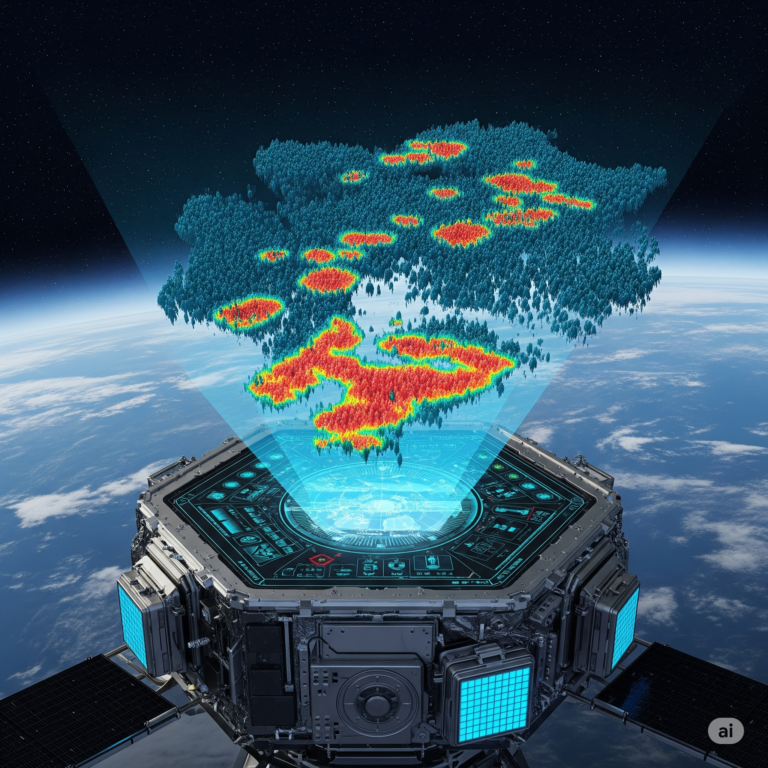In a significant scientific leap, researchers at the University of Tokyo have engineered a revolutionary quantum sensor that can detect individual magnons — the fundamental quantum particles of magnetic excitation. This breakthrough, published in the prestigious journal Science, marks a milestone in quantum technology and magnetic detection, offering immense potential for advancements in quantum computing, materials science, and medical diagnostics.
In simple terms, this new sensor can “hear” the smallest magnetic whispers in materials by detecting individual magnons. Such precision has never before been achieved and is only possible through the use of quantum entanglement, a phenomenon where particles become linked and instantly influence each other, even across distances.
What Are Magnons and Why Do They Matter?
Magnons are quantized spin waves that represent collective excitations in magnetic materials. In layman’s terms, they are tiny disturbances in the magnetic alignment of particles within a material – like ripples in a pond, but made of magnetic energy.
Understanding and detecting magnons is crucial because:
- They are pivotal to the development of next-generation spintronic technologies.
- They can transfer information without physical movement of electrons, reducing energy loss.
- They are essential to developing faster, more efficient quantum computing systems.
Detecting single magnons allows scientists to observe magnetic phenomena at the most fundamental level, enhancing our ability to manipulate quantum materials and design new quantum-based technologies.
The Breakthrough: Single-Shot Detection of a Magnon
The researchers achieved something groundbreaking: the single-shot detection of individual magnons using a quantum sensor. Here’s how they did it:
- Integration of Superconducting Qubit: The sensor incorporates a superconducting qubit, which serves as the fundamental building block of quantum information.
- Coupling with a Magnetic Sphere: A tiny magnetic sphere (just a few millimeters in size) was placed near the qubit.
- Quantum Entanglement in Action: The qubit and the magnetic material were entangled, allowing the system to react instantly to the presence of a magnon.
This sensor operates near the absolute limits of magnetic detection defined by the laws of quantum mechanics.
Understanding the Quantum Entanglement Involved
Quantum entanglement plays a crucial role in this innovation. When the superconducting qubit and the magnon in the magnetic sphere become entangled, any change in the magnon’s state immediately affects the qubit. This linkage is what enables the detection of a single magnon in real time.
Entanglement ensures:
- Ultra-fast communication between the two systems.
- High sensitivity and precision in detection.
- Reduction in measurement errors common in traditional sensors.
Implications for Quantum Computing
Quantum computers need incredibly sensitive and accurate systems to store and transfer quantum information. This magnon detector opens doors to using magnetic materials for storing quantum bits (qubits) in a more energy-efficient and noise-resistant manner.
Potential use cases include:
- Building hybrid quantum systems using magnons and photons.
- Developing new memory architectures in quantum processors.
- Improving coherence time (i.e., how long quantum information remains intact).
Impact on Medical Diagnostics
Ultra-sensitive magnetic detection can revolutionize medical diagnostics. For example:
- Detecting minute changes in magnetic fields in the human brain for neurological research.
- Creating MRI machines with dramatically higher resolution.
- Enabling early detection of diseases via tiny biochemical changes.
These applications could be particularly impactful in India, where there is a growing focus on affordable and accessible healthcare technologies.
Materials Science and Magnetic Research
With the ability to detect single magnons, scientists can study magnetic materials at a scale never before possible. This will aid in:
- Developing novel magnetic materials.
- Improving data storage systems.
- Creating environmentally friendly alternatives to traditional electronics.
India’s materials science research institutes like IISc, IITs, and BARC could leverage this technology to pioneer new breakthroughs.
The Indian Perspective: Why This Matters
India has consistently aimed to establish itself as a global frontrunner in quantum technology. Under the National Mission on Quantum Technologies & Applications (NM-QTA), the Indian government has allocated ₹8,000 crores to advance quantum research over the next five years.
Benefits to India include:
- Boosting indigenous innovation and patents.
- Enhancing global collaborations with institutes like the University of Tokyo.
- Supporting startups working in quantum computing, healthcare tech, and defense applications.
This research also aligns with India’s goals of “Make in India” and “Atmanirbhar Bharat,” by reducing reliance on imported high-tech diagnostic and computing equipment.
Challenges Ahead
Despite the promise, there are technical and practical challenges:
- Maintaining quantum coherence at room temperature.
- Scaling the technology for commercial use.
- Integrating with existing diagnostic or computing systems.
However, these are not insurmountable. With government support and academic-industrial collaboration, these obstacles can be overcome.
What Lies Ahead? The Future of Quantum Sensors
This quantum magnon sensor is just the beginning. In the next decade, we could see:
- Wearable quantum sensors for health monitoring.
- Quantum internet infrastructure enhanced by magnon detection.
- Better understanding of fundamental physics through real-time magnetic interaction mapping.
India, with its talent pool and growing investments, is well-positioned to be at the forefront of this revolution.
Conclusion: Detecting the Undetectable
The ability to detect individual magnons represents more than just a scientific triumph — it signals the dawn of ultra-sensitive quantum systems that can transform industries. From enabling smarter quantum computers to revolutionizing healthcare and materials science, this innovation is set to have far-reaching impacts.
For India, this is a call to action: to invest, innovate, and integrate quantum technologies into our national fabric. As the world marches toward a quantum future, detecting magnons might just be the quietest step with the loudest impact.
🧾 Author’s Note:
This article exemplifies how something as tiny as a magnon can have a massive impact on technology and healthcare. I hope this inspires readers and researchers in India and around the globe to keep pushing the boundaries of what’s possible in the quantum realm.









+ There are no comments
Add yours